Draft
SUMMARY REPORT
PROJECT NOT TO ORGANIZATE DISTRICT LEVEL ADMINISTRATIVE UNITS,
ARRANGEMENT OF COMMUNE-LEVEL ADMINISTRATIVE UNITS AND ORGANIZATION OF COMMUNE-LEVEL POLITICAL SYSTEM AFTER ARRANGEMENT
-----
Implementing the Central's direction on ending the activities of the district level, rearranging and reorganizing the commune-level administrative units and building a 2-level local government organization model; the Steering Committee for research and continuing to rearrange the organization of the political system of Binh Duong province to be streamlined, strong, efficient, effective and efficient has met 7 times, submitted to the Standing Committee of the Provincial Party Committee for comments 7 times; submitted to the Provincial Party Committee for meetings 2 times to carry out the process of developing the Project, the Standing Committee of the Binh Duong Provincial Party Committee briefly reported the project on rearranging the commune-level administrative units as follows:
I. THE NECESSITY OF ARRANGEMENT OF COMMUNE-LEVEL ADMINISTRATIVE UNITS
1. Complying with the Central Government's direction on organizing a two-level government and rearranging commune-level administrative units must ensure comprehensiveness, synchronization, and unity in the political system; the implementation process must be careful, thorough, scientific, with appropriate, strict, and effective methods, in compliance with the Constitution and laws.
2. The development of a project to reorganize commune-level administrative units must take into account factors related to natural conditions, traffic infrastructure, distribution and organization of economic spaces to ensure maximum promotion of the potential and advantages of economic development of each locality, mutual support to promote the overall socio-economic development of the administrative unit after the reorganization; carefully consider factors related to the level and management capacity of local Party committees and authorities, the level of digital transformation, application of information technology by local authorities and people; ensure requirements on national defense and security, build solid defense zones in key areas; preserve and promote historical, cultural and ethnic traditions of each locality; ensure solidarity and unity of the community; serve as a basis for promoting decentralization, delegation of power, enhancing autonomy and self-responsibility of local authorities; ensure that commune-level local authorities are close to the people.
3. Overcoming the situation of small-scale communal administrative units that do not meet the prescribed standards, creating more favorable conditions for planning, investing in socio-economic development, infrastructure development, attracting investment, creating jobs for people; expanding the urbanization process. The arrangement also helps improve the effectiveness of state management, creating a favorable environment for production and business activities of people and enterprises.
II. POLITICAL AND LEGAL BASIS
1. Conclusion No. 127-KL/TW dated February 28, 2025 of the Politburo and Secretariat on implementing research and proposing to continue to reorganize the apparatus of the political system.
2. Official dispatch No. 43-CV/BCĐ dated March 20, 2025 of the Central Steering Committee on summarizing Resolution No. 18-NQ/TW on the plan to continue to reorganize the apparatus of the political system.
3. Conclusion No. 137-KL/TW dated March 28, 2025 of the Politburo and Secretariat on the Project on rearranging and reorganizing commune-level administrative units and building a 2-level local government organization model.
4. Resolution No. 60-NQ/TW dated April 12, 2025 of the 11th Conference of the 13th Party Central Committee.
5. Plan No. 47-KH/BCĐ, dated April 14, 2025 of the Central Steering Committee on summarizing Resolution No. 18-NQ/TW on implementing the arrangement and merger of provincial and communal administrative units and organizing a 2-level local government system.
6. Resolution No. 76/2025/UBTVQH15, dated April 15, 2025 of the Standing Committee of the National Assembly on the arrangement of administrative units in 2025.
7. Decision No. 759/QD-TTg dated April 14, 2025 of the Prime Minister approving the Project on rearranging and reorganizing administrative units at all levels and building a 2-level local government organization model.
8. Official dispatch No. 03/CV-BCĐ, dated April 15, 2025 of the Steering Committee for the arrangement of commune-level administrative units and the construction of a 2-level local government organization model on the organization of the apparatus, cadres, civil servants and public employees when implementing the arrangement.
III. CRITERIA FOR ROTATING COMMUNE-LEVEL ADMINISTRATIVE UNITS
1. General criteria
- Arrange and reorganize current district and commune-level administrative units in the direction of eliminating the intermediate level (district level), forming new commune-level administrative units, including: communes, wards and special zones (no longer have the types of city, town, district, county and township administrative units).
- The commune-level administrative unit after the arrangement is not a miniature district level, with a population size and natural area not too large to be far from the people. It must ensure that the local government at the commune level can manage the area, grasp the situation, be close to the people, and serve the people best.
- In case of rearranging wards with communes, the new administrative unit after the rearrangement is the ward; in case of rearranging communes and towns, the new administrative unit after the rearrangement is the commune.
- It is not mandatory to reorganize and rearrange administrative units that are isolated and have difficulty in organizing convenient traffic connections with adjacent administrative units.
- Linking the arrangement of administrative units with innovation, reorganizing the apparatus of the political system to be streamlined, effective and efficient; promoting potentials and advantages, expanding development space of localities, continuing to develop urbanization; promoting decentralization, delegation of power, enhancing autonomy and self-responsibility of local governments; restructuring and improving the quality of cadres, civil servants, public employees and workers; ensuring that grassroots governments are close to the people and serve the people best.
2. Area and population criteria
Pursuant to Resolution No. 76/2025/UBTVQH15, dated April 15, 2025 of the Standing Committee of the National Assembly and ensuring that the whole country reduces the number of commune-level administrative units by about 60-70% compared to present, in accordance with the characteristics of rural and urban areas and meeting the orientation, achieving at least the following criteria:
- Commune: area 30 km 2 ; population: 16,000 people.
- Ward: area 5.5 km 2 ; population: 45,000 people.
In case of arranging 03 or more commune-level administrative units into 01 new commune or ward, it is not necessary to consider and evaluate the standards.
3. Criteria for names and working headquarters of commune-level administrative units after rearrangement
- The naming of commune-level administrative units after the rearrangement must be easy to read, easy to remember, concise, ensure systematicity, scientificity, be consistent with the historical and cultural traditions of the locality and be supported by the local people;
- Headquarters: choose the working headquarters of the commune-level administrative unit after the arrangement to ensure that the local government quickly goes into stable operation, has a convenient transportation system, and is easily connected to localities.
IV. NUMBER OF COMMUNE-LEVEL ADMINISTRATIVE UNITS
Based on the reduction rate of about 60% to 70% according to the Central's orientation, the criteria on area and population, associated with the approved socio-economic development planning and traffic infrastructure planning, it is expected that after the rearrangement, Binh Duong province will have 36 commune-level administrative units (including 24 wards and 12 communes) ( reducing 55 commune-level administrative units, a reduction rate of 60.4% ) . At the same time, Binh Duong province identified 10 commune-level administrative units after the rearrangement as key areas of the province and current district-level localities to create space for development and urban upgrading in the future. The expected names and headquarters of communes and wards after the merger and consolidation are as follows:
(1) Merge Binh An Ward, Binh Thang Ward and Dong Hoa Ward, named Dong Hoa Ward, headquarters located in Dong Hoa Ward.
(2) Merge Di An Ward, An Binh Ward and the neighborhoods: Chieu Lieu, Chieu Lieu A, Dong Chieu, Dong Chieu A, Tan Long of Tan Dong Hiep Ward, named Di An Ward, headquartered at the People's Committee of Di An City (this is a key ward of Di An area).
(3) Merge Tan Binh ward, the neighborhoods: Dong Thanh, Dong An, Tan An, Dong Tac of Tan Dong Hiep ward; Ba Dinh, Tan Ba, My Hiep, Tan My of Thai Hoa ward, Tan Uyen city, named Tan Binh ward (can change the name to Tan Dong Hiep ward because of the same name as Tan Binh ward of Ho Chi Minh City) , headquarters located in Tan Binh ward.
(4) Merge An Son commune, Hung Dinh ward and An Thanh ward, named Thuan An ward, headquarters located in Hung Dinh ward.
(5) Merge Thuan Giao Ward and the neighborhoods: Binh Quoi A, Binh Quoi B, Binh Phu of Binh Chuan Ward, named Thuan Giao Ward, with headquarters located in Binh Chuan Ward.
(6) Merge Binh Hoa Ward and the neighborhoods: Trung, Dong, Phu Hoi of Vinh Phu Ward, named Binh Hoa Ward, with headquarters located in Binh Hoa Ward.
(7) Merge Lai Thieu Ward, Binh Nham Ward and neighborhoods: Hoa Long, Tay of Vinh Phu Ward, named Lai Thieu Ward, headquarters located at Thuan An City People's Committee (this is a key ward of Thuan An area).
(8) Merge An Phu Ward and neighborhoods: Binh Phuoc A, Binh Phuoc B wards of Binh Chuan Ward, named An Phu Ward, headquarters located in An Phu Ward.
(9) Merge Hoa Phu ward, Phu My ward, Phu Tan ward and Phu Chanh ward - Tan Uyen city, named Binh Duong ward, headquarters located in Hoa Phu ward (this is a key ward of Binh Duong).
(10) Merge Dinh Hoa Ward, Tuong Binh Hiep Ward, Chanh My Ward (except for the neighborhoods: Chanh Loc 1, Chanh Loc 2, Chanh Loc 7) and neighborhoods: 5, 6 belong to Hiep Thanh ward and named Chanh Hiep ward, headquarters located in Tuong Binh Hiep ward.
(11) Merge Phu Cuong Ward, Phu Tho Ward, Chanh Nghia Ward, neighborhoods: 1, 2, 3, 4 of Hiep Thanh Ward; Chanh Loc 1, Chanh Loc 2, Chanh Loc 7 of Chanh My Ward named Thu Dau Mot Ward, headquarters located at Thu Dau Mot City People's Committee (this is a key ward of Thu Dau Mot area).
(12) Merge Phu Loi Ward, Phu Hoa Ward and wards 7, 8 of Hiep Thanh Ward, named Phu Loi Ward, headquarters located in Phu Hoa Ward.
(13) Merge Vinh Tan Ward and Tan Binh Town, Bac Tan Uyen District, named Vinh Tan Ward, headquarters located in Vinh Tan Ward.
(14) Merge Hoi Nghia Ward and Binh My Commune, Bac Tan Uyen District, named Binh My Ward (can be changed to Hoi Nghia Ward due to the same name as Binh My Commune of Ho Chi Minh City) , headquarters located in Hoi Nghia Ward.
(15) Merge Bach Dang commune, Tan Lap commune, Uyen Hung ward; hamlets: 2, 3, Xom Den, Vuon Vu, Bung Luong of Tan My commune, named Tan Uyen ward, headquarters located at Tan Uyen city People's Committee (this is a key ward of Tan Uyen area).
(16) Merge Khanh Binh Ward and Tan Hiep Ward, named Tan Hiep Ward, headquarters located in Tan Hiep Ward.
(17) Merge Tan Phuoc Khanh ward, Tan Vinh Hiep ward, Thanh Phuoc ward, Thanh Hoi commune and the neighborhoods: Phuoc Thai, Phuoc Hai, An Thanh, Vinh Phuoc of Thai Hoa ward and take the name Tan Khanh ward, the headquarters is located in Tan Phuoc Khanh ward.
(18) Merge Phu An commune, Tan An ward, Hiep An ward, named Phu An ward, headquarters located in Hiep An ward.
(19) Merge An Tay Ward, Thanh Tuyen Commune (except Duong Long Hamlet), Kien An hamlet, Ho Can hamlet, An Lap commune, Dau Tieng district, named Tay Nam ward, headquarters located in An Tay ward.
(20) Merge An Dien Ward, Quarter 1 of My Phuoc Ward and Long Nguyen Commune, Bau Bang District, named Long Nguyen Ward, with headquarters located in An Dien Ward.
(21) Merge My Phuoc Ward (except for Quarter 1), Lai Hung Commune and Tan Hung Commune of Bau Bang District into Ben Cat Ward, with headquarters located at Ben Cat City People's Committee (this is a key ward of Ben Cat area).
(22) Merge Chanh Phu Hoa Ward and Hung Hoa Commune - Bau Bang District, named Chanh Phu Hoa Ward, headquarters located in Chanh Phu Hoa Ward.
(23) Thoi Hoa Ward retains its current status.
(24) Merge Hoa Loi Ward and Tan Dinh Ward, named Tan Dinh Ward (can change name to Hoa Loi Ward due to same name as Tan Dinh Ward of Ho Chi Minh City) , head office located in Hoa Loi Ward.
(25) Merge Dat Cuoc Commune, Tan Dinh Commune and Tan Thanh Town, named Bac Tan Uyen Commune, headquartered at Bac Tan Uyen District People's Committee (this is a key commune of Bac Tan Uyen area).
(26) Merge Thuong Tan commune, Lac An commune and Hieu Liem commune and hamlets: 1, Gia Lac of Tan My commune, named Thuong Tan commune, headquarters located in Lac An commune.
(27) Merge An Linh commune, An Long commune and Tan Long commune to name Phu Giao commune, headquarters located in An Long commune.
(28) Merge An Thai commune, Phuoc Sang commune and Tan Hiep commune into Phuoc Thanh commune, with headquarters located in Phuoc Sang commune.
(29) Merge Vinh Hoa commune, Phuoc Hoa commune and the hamlets: Cay Kho, Doi Chuot of Tam Lap commune to be named Phuoc Hoa commune, with headquarters located in Vinh Hoa commune.
(30) Merge An Binh commune, Phuoc Vinh town and hamlets: Gia Bien, Dong Tam of Tam Lap commune, named Phuoc Vinh commune, headquarters located at Phu Giao district People's Committee (this is a key commune of location Phu Giao).
(31) Merge Tru Van Tho Commune, Cay Truong II Commune and Bau Long Quarter of Lai Uyen Town, named Tru Van Tho Commune, with headquarters located in Tru Van Tho Commune.
(32) Lai Uyen town (except Bau Long Quarter) , named Bau Bang commune, headquarters located at Bau Bang District People's Committee (this is a key commune of location Bau Bang).
(33) Merge Minh Tan commune (except Tan Dinh hamlet), Minh Hoa commune and Minh Thanh commune (except hamlets: Cam Xe, Can Don) to be named Minh Thanh commune, with headquarters located in Minh Hoa commune.
(34) Merge Long Tan commune, Long Hoa commune, Tan Dinh hamlet of Minh Tan commune and hamlets: Cam Xe, Can Don of Minh Thanh commune, named Long Hoa commune, headquarters located in Long Hoa commune.
(35) Merge Dinh An commune, Dinh Thanh commune, Dau Tieng town and hamlets: Dinh Loc, Hiep Tho, Hiep Loc, Hiep Phuoc of Dinh Hiep commune to be named Dau Tieng commune, with headquarters located at Dau Tieng District People's Committee (this is a key commune of the province). location Oil
(36) Merge Thanh An commune, the hamlets: Dinh Phuoc, Dong Trai, Dinh Tho, Dang Huong of Dinh Hiep commune, Duong Long hamlet of Thanh Tuyen commune and An Lap commune (except Ho Can hamlet, Kien An hamlet) named Thanh An commune, the headquarters is located in Thanh An commune.
V. ORGANIZATION OF THE COMMUNE-LEVEL POLITICAL SYSTEM AFTER REVERSAL
Regarding the organization and staffing of the new commune-level political system, it will be implemented in accordance with the direction of the Central Government and the directive documents of the National Assembly and the Government.
VI. CONTENT OF REQUEST FOR OPINION
1. Unifying the implementation of the policy of the Central Executive Committee, the Politburo, the Secretariat, and Binh Duong Provincial Party Committee on provincial-level mergers (Ba Ria - Vung Tau province and Binh Duong province merged with Ho Chi Minh City, named Ho Chi Minh City, with the administrative center located in Ho Chi Minh City), ending the operation of district-level administrative units, and rearranging commune-level administrative units.
2. Administrative boundaries of commune-level administrative units after arrangement and consolidation.
3. Name of new commune-level administrative unit after arrangement and merger.
4. Headquarters where the new administrative unit and commune level are expected to be located after the arrangement and merger.
5. Some other related content.
Above is a summary report of the project to rearrange commune-level administrative units.
Source: https://www.binhduong.gov.vn/Lists/TinTucSuKien/ChiTiet.aspx?ID=15948




![[Photo] Prime Minister Pham Minh Chinh meets with US business representatives](https://vphoto.vietnam.vn/thumb/1200x675/vietnam/resource/IMAGE/2025/5/13/5bf2bff8977041adab2baf9944e547b5)


![[Photo] President Luong Cuong attends the inauguration of the international container port in Hai Phong](https://vphoto.vietnam.vn/thumb/1200x675/vietnam/resource/IMAGE/2025/5/13/9544c01a03e241fdadb6f9708e1c0b65)

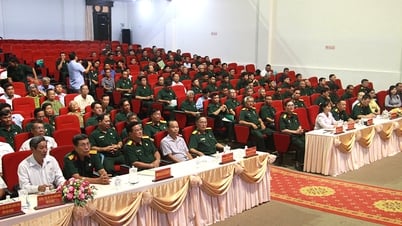
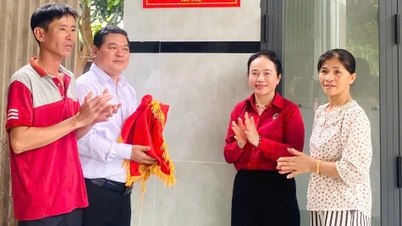
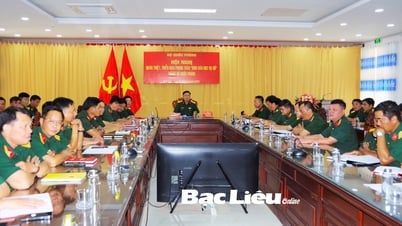

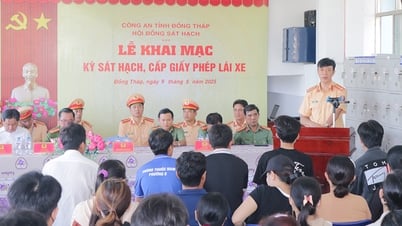








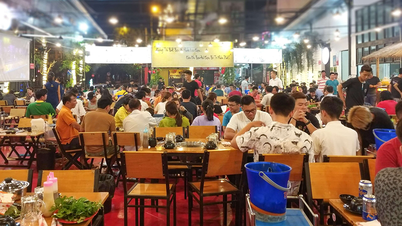




















































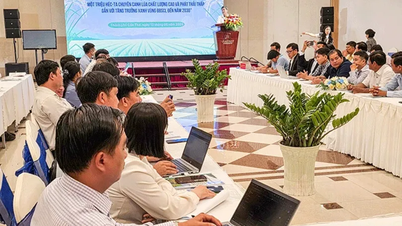



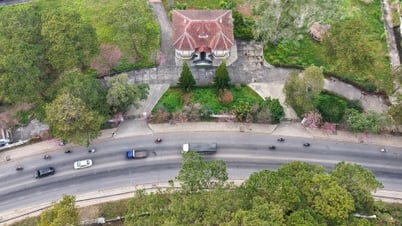

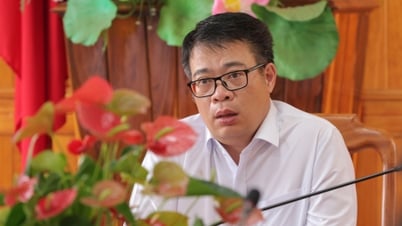
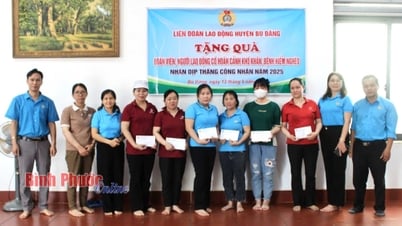

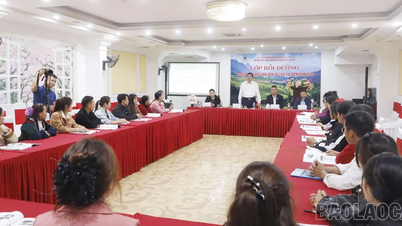








Comment (0)